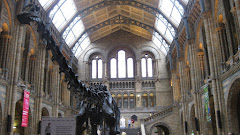· We have seen many types of collections in our various excursions, including Wallace’s cabinet of tropical butterflies, Hunter’s huge range of human and animal curiosities, the Royal College of Surgeon’s pathological displays, and Edinburgh Botanical Garden’s exhaustive herbarium. Yet these collections are as different in their function and their arrangement as they are in their content. I suppose one generalist way to classify collections is into two groups: specimens of many different species, like butterflies or plants, and specimens of anatomy and pathology, usually human. The first type, natural history collections, emphasizes ordering between specimens—taxonomy—as well discoveries of new types and contributions of specific scientists—collected by so and so, at such a place, etc. The second type, anatomical collections, have an order—kidney diseases in this room, blackened lungs in that—but looser, so that Hunter’s display of elephant skulls preside peaceably above shelves of various human organs, which are near the skeleton of an Irish giant, which is near portraits of Italian and Irish dwarves. This suggests another difference: anatomical collections were more prone to becoming an eclectic group of curiosities, at worst still life freak shows, while Wallace’s exactly ordered insect collection has more of a dispassionate, professional feel. Even the Royal College of Surgeon’s pathology collection, used by the new ranks of professional surgeon apothecaries, is not above some more gruesome displays, including Burke’s skeleton and a pocket book made out of his skin (though this is probably a more recent public display). Finally, anatomical museums, aside from a few exceptions like Burke’s skin or Livingston’s humerus, were largely anonymous, with no indications of the person the organ belonged to or the doctor who collected it. Perhaps this is another indication of a new mentality of medicine, where the disease, as manifested in clear physical changes in specific organs, began to take precedence over the patients’ names and case histories.
Monday, 13 July 2009
Subscribe to:
Post Comments (Atom)

No comments:
Post a Comment